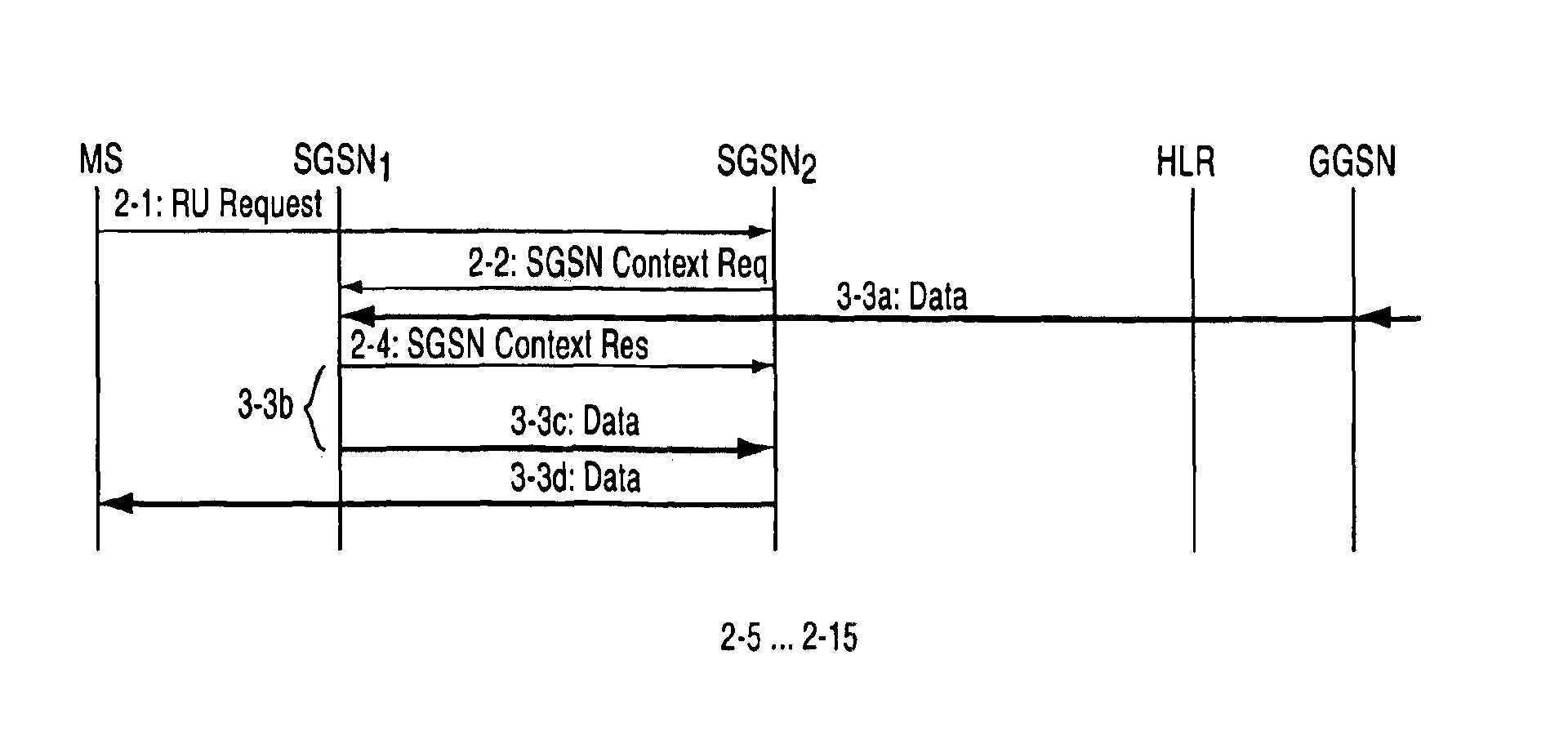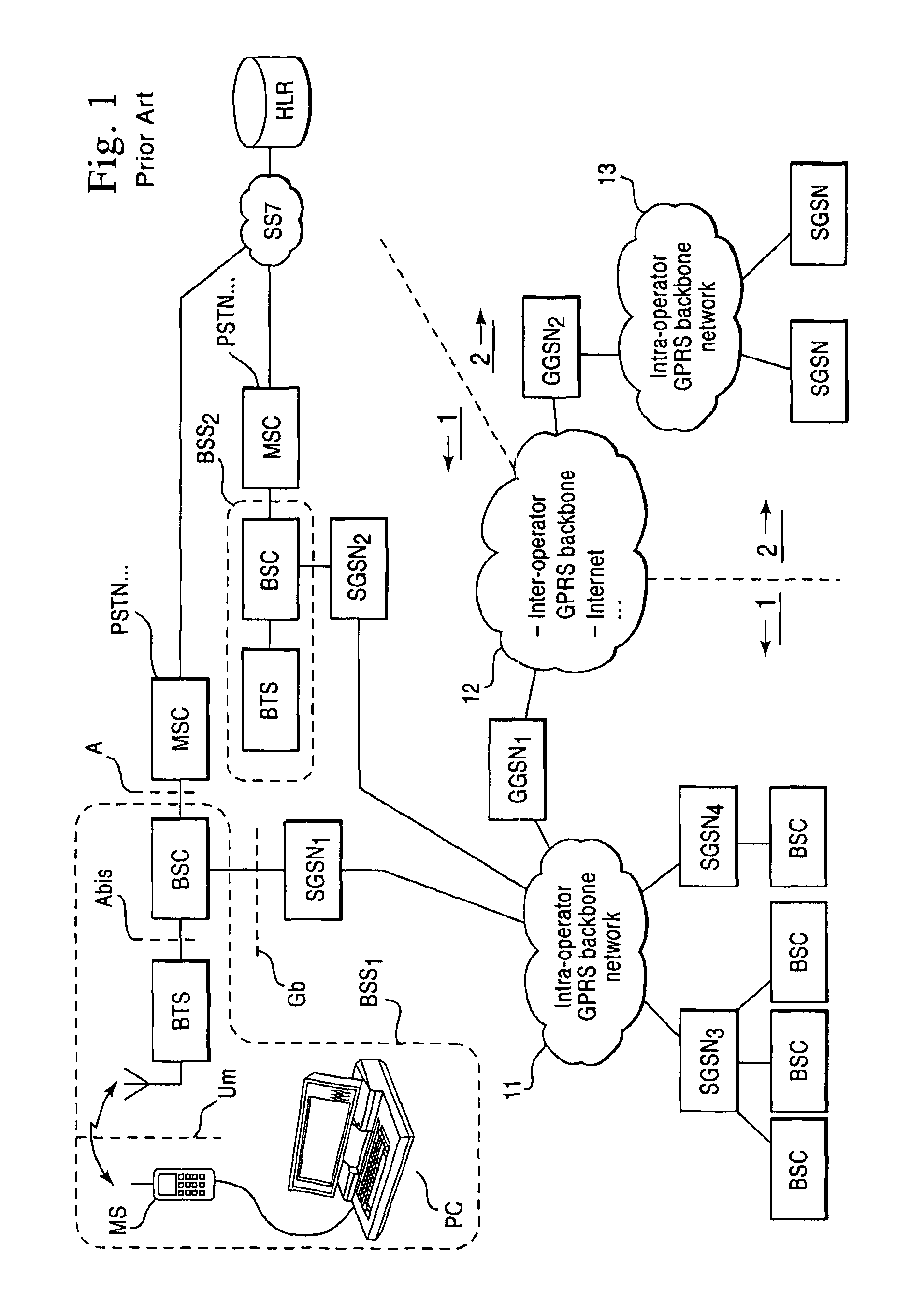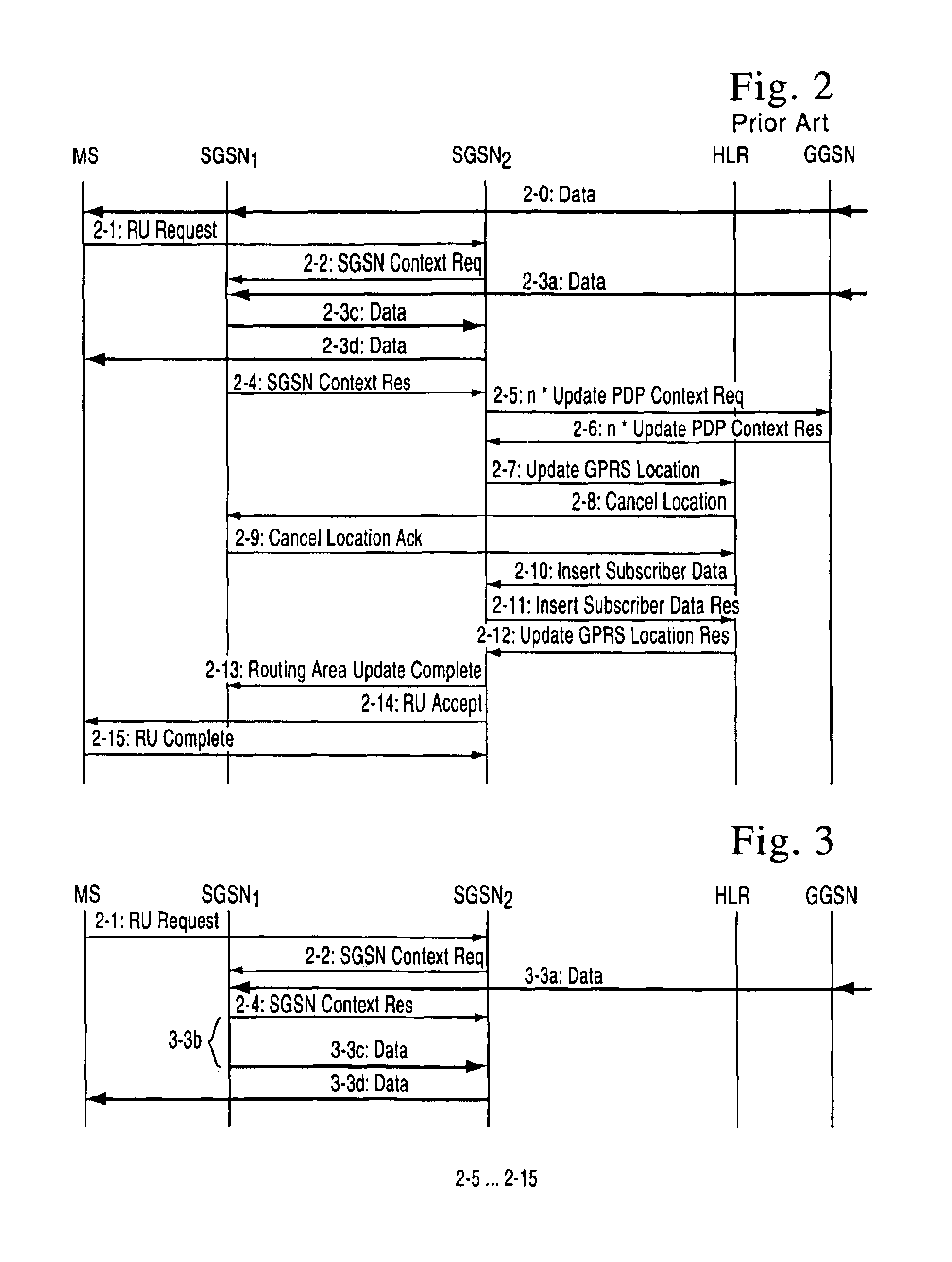Routing area update in packet radio network
a packet radio network and update technology, applied in the direction of electrical equipment, wireless commuication services, connection management, etc., can solve the problems of deleting the pdp context from the registers of the old support node, affecting the signalling load, etc., and achieve the effect of increasing the signalling load
- Summary
- Abstract
- Description
- Claims
- Application Information
AI Technical Summary
Benefits of technology
Problems solved by technology
Method used
Image
Examples
first embodiment
FIG. 3 shows signalling associated with routing area maintenance in accordance with the invention. In this case the other steps are the same as were described in association with FIG. 2, but steps 2-3a to 2-3d (data transmission via the old support node SGSN1) have been replaced by steps 3-3a to 3-3d. Step 3-3a corresponds to step 2-3a. In this step the SGSN1 receives data packets addressed to a mobile station. In step 3-3b the SGSN2 waits for a fixed period of time (which preferably depends on the quality of service of the connection). After the waiting time, in step 3-3c, the SGSN, sends the data packets in its memory to the SGSN2, which relays them to the mobile station MS in step 3-3d. Thereafter the embodiment shown in FIG. 3 comprises steps 2-5 to 2-15, but they will not be shown nor described again.
FIG. 4 shows signalling associated with routing area maintenance in accordance with an alternative implementation of the first embodiment of the invention. In this case, too, the s...
second embodiment
FIG. 5 is a flow diagram of the invention. In step 50 the new support node SGSN2 (and particularly its GTP unit) receives data packets which are not associated with any POP context. In step 51 the support node checks whether a routing area update between support nodes is in progress. If so, in step 53 the support node associates the packets with a temporary context. When it is detected in step 54 that the routing area update has been terminated, the process proceeds to step 55 in which the SGSN2 sends the packets to the recipient. If it is detected in step 51 that no routing area updates between support nodes are in progress, the process proceeds to step 52, in which the packets are discarded and an error message sent to the sender of the packets.
PUM
 Login to View More
Login to View More Abstract
Description
Claims
Application Information
 Login to View More
Login to View More - R&D
- Intellectual Property
- Life Sciences
- Materials
- Tech Scout
- Unparalleled Data Quality
- Higher Quality Content
- 60% Fewer Hallucinations
Browse by: Latest US Patents, China's latest patents, Technical Efficacy Thesaurus, Application Domain, Technology Topic, Popular Technical Reports.
© 2025 PatSnap. All rights reserved.Legal|Privacy policy|Modern Slavery Act Transparency Statement|Sitemap|About US| Contact US: help@patsnap.com



